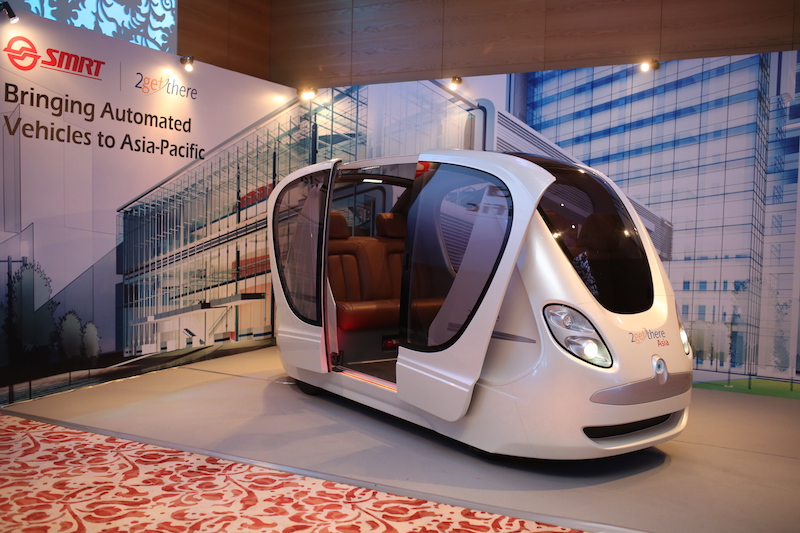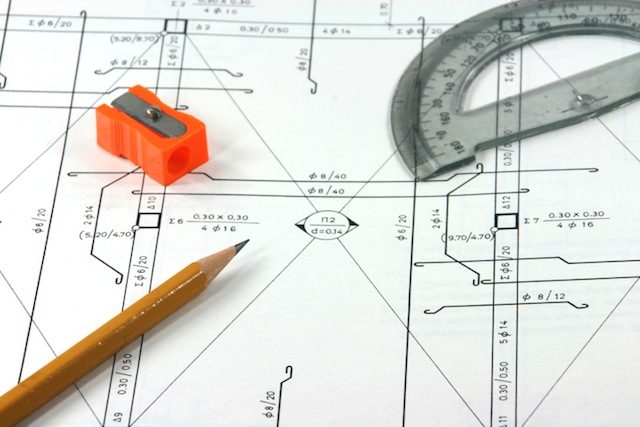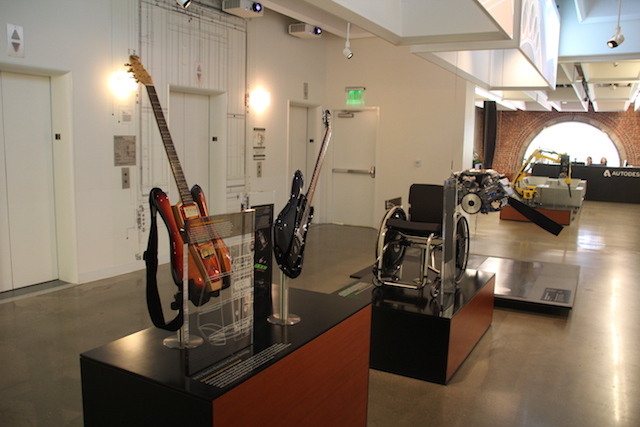What is the future of design and manufacturing in an age of 3D printing and powerful software? Computer Aided Design company Autodesk gives us some clues at how the world of design is changing.
Sitting in what was once the Southern Pacific Railway’s headquarters at the beginning of San Francisco’s Market Street is design software company Autodesk’s demonstration gallery showcases how design and manufacturing are going to radically change in coming years.
The first exhibit in the exhibition, which is open to the public three days a week with guided tours on Wednesdays, is a scale model of the Shanghai Tower that illustrates the power of simulations and the value computers add to the building and architecture industries.

Currently China’s tallest skyscraper and the second highest in the world, one of the notable features of the Shanghai Tower is how the designers were able to extensively model the shape of the building to reduce the loads on the structure. The cost and weight savings enabled the developers to create a far more lightweight building with a reduced environmental footprint.
For architects, builders and designers the Shanghai tower is an example of how desktop prototyping can be used to experiment with competing schemes to see what designs meet the needs of those using the building or product.
The biggest exhibit in the hall is the Mercedes Biome concept car chassis. First unveiled at the 2010 Los Angeles Car Show, the idea behind the vehicle’s design is an organic form similar to an animal’s skull to create a strong but lightweight structure.

Adding to the Biome’s exotic design is the proposal to ‘grow’ the car’s chassis out of genetically modified seeds. Essentially the vehicle’s structure wouldn’t be manufactured in our current understanding of the word at all.

While the Biome or similar vehicles won’t be seen on the roads in the near future – Mercedes predict the vehicle is at least 60 years away – the idea behind ‘growing’ industrial items is one that may well become commonplace in the near future for smaller items.

The other big exhibit in the gallery is the Lego dinosaur. Made up of 62,000 custom designed pieces, the dinosaur was assembled in at the company’s Czech Republic facility before being shipped to California.
One disappointing aspect of the dinosaur for some of the attendees is that these models aren’t made of solid Lego. Instead an internal brace is made that supports the structure. Again this is a feature of the design software that allows the creators to accurately calculate the weight and build a model that won’t collapse under its own mass.
At the other end of the size range, but no less important, is the display of 3D printed prosthetic limbs. It’s now possible to scan the remaining limb and create a device that closely replicated the lost limb.

Again, using 3D printing allows those limbs to be quickly made to the custom specifications, the design also allows weight saving features to be incorporated into the prosthetic. This exhibit shows just how life changing modern technologies can be.
Finally, one of the most intriguing devices is the The SOCCKET power generating soccer ball designed to promote physical activity and help children in developing nations access light to study by.

The SOCCKET charges up as kids play with the ball, in the evening an energy efficient LED lamp can be plugged into the ball. The Soccket retails for 99 US Dollars and for ball sold one is donated to a third world community.
Products like the Soccket, the prosthetic limbs and many of the other displays in the Autodesk Demonstration Gallery show the potential of a world where new ways of manufacturing join with modern design tools. It’s worth a visit to appreciate some of the ways our world is going to change in coming years.
The gallery is open to the public every Monday, Wednesday, Friday from 10 a.m. to 5 p.m., with a guided tour at 12:30 p.m. every Wednesday. Admission is free.
Similar posts:










